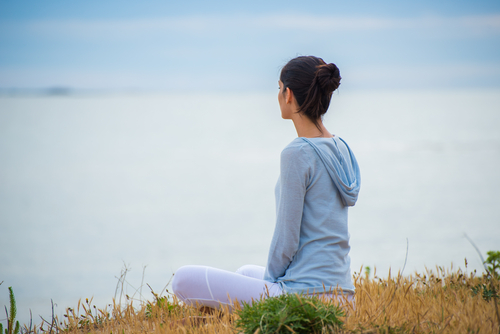 The practice of mindfulness is an ancient one, dating back for many centuries. Those who practice mindfulness seek ways to lower stress, anxiety and build awareness of thoughts, feelings and bodily sensations or moods.
The practice of mindfulness is an ancient one, dating back for many centuries. Those who practice mindfulness seek ways to lower stress, anxiety and build awareness of thoughts, feelings and bodily sensations or moods.
Mindfulness
Acceptance is a key component of mindfulness. Gratitude for the moment, receiving it as it opens up and unfolds is a great way to build acceptance into a mindfulness practice. In mindfulness, there is no judgment, just noticing. One of the more difficult parts of mindfulness is to be here now, rather than be in the past thinking of what happened or in the future wondering what will be. To be present, here and now, takes practice, patience and persistence to stay focused and attentive to what sensations, thoughts and feelings are occurring i this very moment. There is no past, or future, only today.
Benefits
Studies are being done more and more which demonstrate both physical and psychological benefits to the incorporation of a mindfulness practice into daily life.
Mindfulness does a body good. After just eight weeks of training, one study found the practice of mindfulness boosts the body’s immune system and its ability to fight off diseases.
Psychologically benefits abound. Negative emotions are lowered and positive ones increase with the practice of mindfulness. Stress rates go down and people report a better overall outlook with increased practice.
Cultivating Mindfulness Daily
As with anything, the practice of mindfulness is most beneficial when done on a daily basis. The amount of stress, anxiety and challenges faced in everyday life necessitate a space of quiet thoughtfulness to process everything positively. There are some components of a daily practice which are helpful in getting started.
Breath is an integral part of mindfulness. Opening up the lungs and taking a deep breath oxygenates blood cells and circulates it throughout the body which aids in lowering stress. Breathe through the nose slowly, then let the air out a little at a time. This allows the flow of air to linger and increase the positive effects.
Take notice of what is happening right now, this moment, from within. Pay close attention to what is circulating through the body and mind. Notice the good and the bad, then let it go like a paper blowing away in the breeze. The goal of mindfulness is not to become focused on any one thing, rather to allow thoughts to enter the mind, feelings to enter the body and then float away. Place of tension or anxiety might come up, so be mindful of their presence then keep breathing until they feel more distant.
Recognizing the fleeting nature of emotions and thoughts is important to a mindfulness practice. Our bodies and minds are built to retain information and make sense of them but in mindfulness the goal is to let it go and feel free. Each moment is a chance to start again, freshly, with a new perspective. What happened a moment ago is in the past and the future has yet to occur. Daily we are made new, shaped and molded for the next moment. Acceptance of this brings a freedom which we can all have, if we are open and mindful to its presence.


